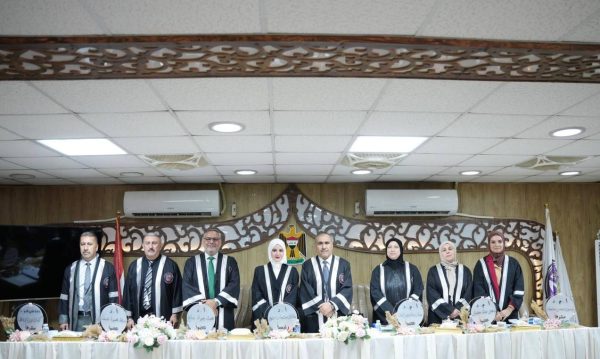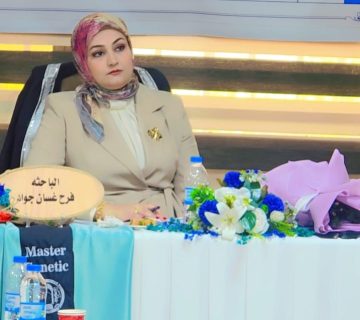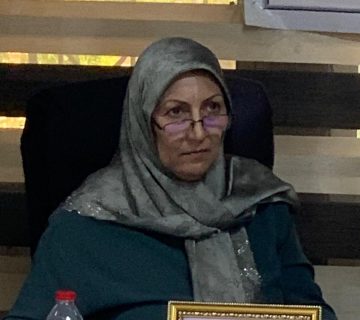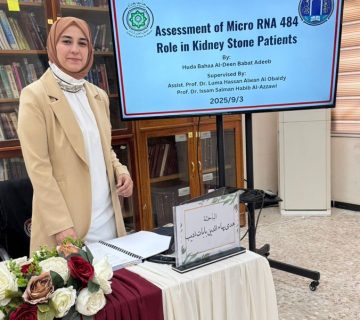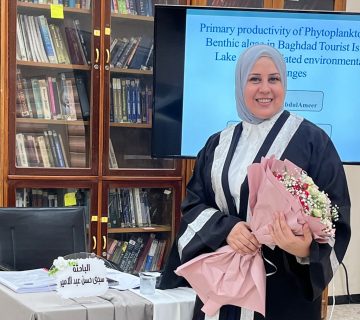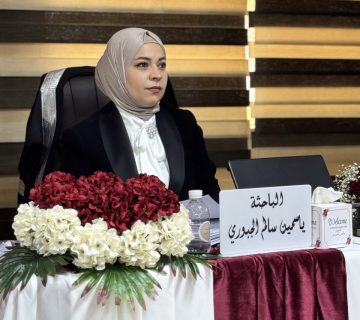Dissertation Discussion
The College of Science for Women at the University of Baghdad discussed the thesis entitled “Evaluation and Treatment of Some Pollutants Present in Soils with Different Activities in the City of Baghdad Using Some Terrestrial Invertebrates” by the student (Ola Riyadh Abbas) in the Partial Fulfilment of the PhD degree in Biology/Environmental Sciences, under the supervision of Assistant Professor Dr. Maysoon Hussein Shajal and Senior Scientific Researcher Dr. Kamal Barazan Nada Al-Paruany from the Scientific Research Commission.
The thesis aims to evaluate soils with various activities (human, industrial, and agricultural) and study, evaluate the physical and chemical properties of soils, including heavy metals and aromatic compounds, as well as the evaluation of micro-plastics, which was considered one of the first studies to evaluate pollutants in the city of Baghdad using a surveying microscope. Treatment experiments were then conducted using terrestrial invertebrates.
The study includes conducting physical-chemical tests of soils and evaluating their aromatic compound content in both the wet and dry seasons. Finally, the total soil micro-plastic content was determined, along with its types and sizes. Earthworms and snails were then selected as biological treatments for soil pollutants, including heavy elements and aromatic compounds, according to a method of growing them in ponds for specific time periods. The content was evaluated after treatment. Additionally, important environmental indicators were calculated, including diversity indicators, Shannon index, and abundance index. Finally, the health and environmental impact of all pollutants in the studied soils was studied.
In this study, it was possible to distinguish soils contaminated with aromatic compounds, heavy metals, and micro-plastics. There is a clear impact of industrial activities related to oil factories and plastic factories, as well as human uses related to landfills. The study revealed that certain soils studied exhibited health and environmental risks, as indicated by specific risk indicators. The results related to micro-plastic particles showed that the selected sites were contaminated with micro-plastic particles at varying levels, and that the concentration of micro-plastic particles during the wet period was higher than during the dry period. This is due to the effect of water on the transport and deposition of small particles in the soil, as well as variations in human and industrial activity levels and climate influences. Earthworm bioremediation was used under ideal growth conditions, and it was found that the treatment was 70-80% efficient for heavy metals and 69-70% efficient for hydrocarbons. The variation in worm bioremediation rates depended primarily on the concentration of the pollutant and the organism’s removal capacity. The best removal was achieved using 50 worms per kg for a period of 28 hours. Day. Regarding the use of snails to remove heavy metals and hydrocarbons, removal rates varied at polluted stations. These rates were found to reach 19.1% for heavy metals and 58.1-86.9% for benzene, and varied for the remaining hydrocarbons. The best removal rates were 60 snails for a period of three months. The study indicated that treatment with worms was better than with snails, recording higher removal rates compared to bioremediation using snails. In both experiments, the process required expertise and scientific consultation from specialists.
Excellent
